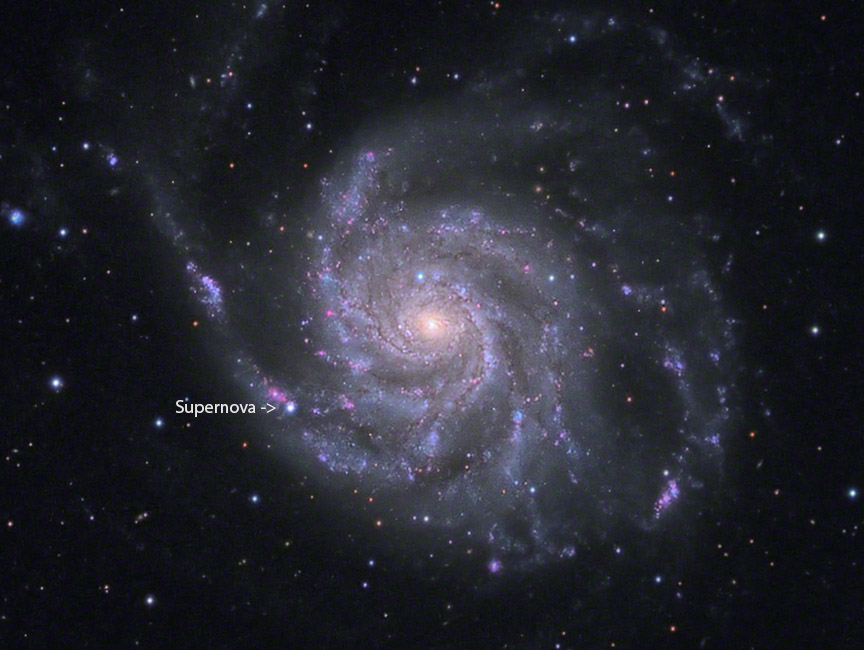

| 
|

About 21 million years ago, a star much larger than our Sun located in spiral galaxy M101 exploded as a supernova. After traveling about 21 million light-years from M101, the light from the explosion reached Earth on May 17, 2023 and was first noticed two days later. Initial observations indicate that it was a Type II supernova, which occur after a massive star runs out of nuclear fuel, collapses on itself, and then explodes. It is cataloged as SN 2023ixf.
I imaged the new supernova on May 31, 2023, while it was near peak brightness. Supernovas are incredibly bright. Even though SN 2023ixf is about 1,000 times farther away than any of the foreground stars in this image, it appears comparably bright.
The above image shows M101 with supernova SN 2023ixf marked, while the roll-over image shows the galaxy before the supernova exploded.
Ancient remnants of supernova explosions in our galaxy include the Crab, the Jellyfish, and the Veil Nebulae.
Detailed information about the base image of M101 is here. North is up. ©2023
| |||||||||||||||||
|
Astrophotography Books – Astronomy Books |








